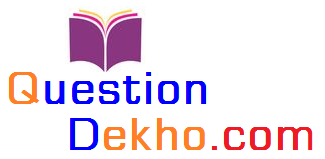Bharat Engineering Limited (BEL) is going to conduct the BEL Probationary Engineer Exam for Computer Science & Engineering . BEL PE CSE Syllabus is for same since 1995. Here we are going to give ypu the details about the BEL Probationary Engineer Syllabus for CSE and Its exam patter.
BEL Probationary Engineer Exam Pattern :
- Total Number of Questions : 150 Nos.
- Test Duration : 150 min
- 1 Mark for CORRECT Answer and -0.25 for WRONG answer.
- Question Paper has two sections. Aptitude section and Technical section.
Aptitude Question Pattern:
- A paragraph is given followed by 5 questions
- Some bits regarding grammar are given
- 2 Data Interpretation questions are given(They’re a bit time taking)
- Statements and Arguments and whether arguments are supporting the given statement or not
- One question related to blood relations
Technical Question Pattern :
Technical questions in BEL exam are asked from the GATE syllabus. So candidates should prepare each section according to GATE 2015 syllabus.
The questions mainly appeared from subjects like DLD,TOC,Discrete Mathematics,DBMS,OS,CN etc..
Give importance to Numerical Method. You will get almost 20 questions from this section.
BEL PE CSE Syllabus & Course Contents
Numerical Methods:
LU decomposition for systems of linear equations; numerical solutions of
non-linear algebraic equations by Secant, Bisection and Newton-Raphson Methods; Numerical
integration by trapezoidal and Simpson’s rules.
COMPUTER SCIENCE
Digital Logic:
Logic functions, Minimization, Design and synthesis of combinational and sequential circuits; Number representation and computer arithmetic (fixed and floating point).
Computer Organization and Architecture:
Machine instructions and addressing modes, ALU and data-path, CPU control design, Memory interface, I/O interface (Interrupt and DMA mode), Instruction pipelining, Cache and main memory, Secondary storage.
Programming and Data Structures:
Programming in C; Functions, Recursion, Parameter passing, Scope, Binding; Abstract data types, Arrays, Stacks, Queues, Linked Lists, Trees, Binary search trees, Binary heaps.
Algorithms:
Analysis, Asymptotic notation, Notions of space and time complexity, Worst and average case analysis; Design: Greedy approach, Dynamic programming, Divide-and-conquer; Tree and graph traversals, Connected components, Spanning trees, Shortest paths; Hashing, Sorting, Searching. Asymptotic analysis (best, worst, average cases) of time and space, upper and lower bounds, Basic concepts of complexity classes – P, NP, NP-hard, NP-complete.
Theory of Computation:
Regular languages and finite automata, Context free languages and Push-down automata, Recursively enumerable sets and Turing machines, Undecidability.
Compiler Design:
Lexical analysis, Parsing, Syntax directed translation, Runtime environments, Intermediate and target code generation, Basics of code optimization.
Operating System:
Processes, Threads, Inter-process communication, Concurrency, Synchronization, Deadlock, CPU scheduling, Memory management and virtual memory, File systems, I/O systems, Protection and security.
Databases:
ER-model, Relational model (relational algebra, tuple calculus), Database design (integrity constraints, normal forms), Query languages (SQL), File structures (sequential files, indexing, B and B+ trees), Transactions and concurrency control.
Information Systems and Software Engineering:
information gathering, requirement and feasibility analysis, data flow diagrams, process specifications, input/output design, process life cycle, planning and managing the project, design, coding, testing, implementation, maintenance.
Computer Networks:
SO/OSI stack, LAN technologies (Ethernet, Token ring), Flow and error control techniques, Routing algorithms, Congestion control, TCP/UDP and sockets, IP(v4), Application layer protocols (icmp, dns, smtp, pop, ftp, http); Basic concepts of hubs, switches, gateways, and routers. Network security – basic concepts of public key and private key cryptography, digital signature, firewalls.
Web technologies:
HTML, XML, basic concepts of client-server computing.
